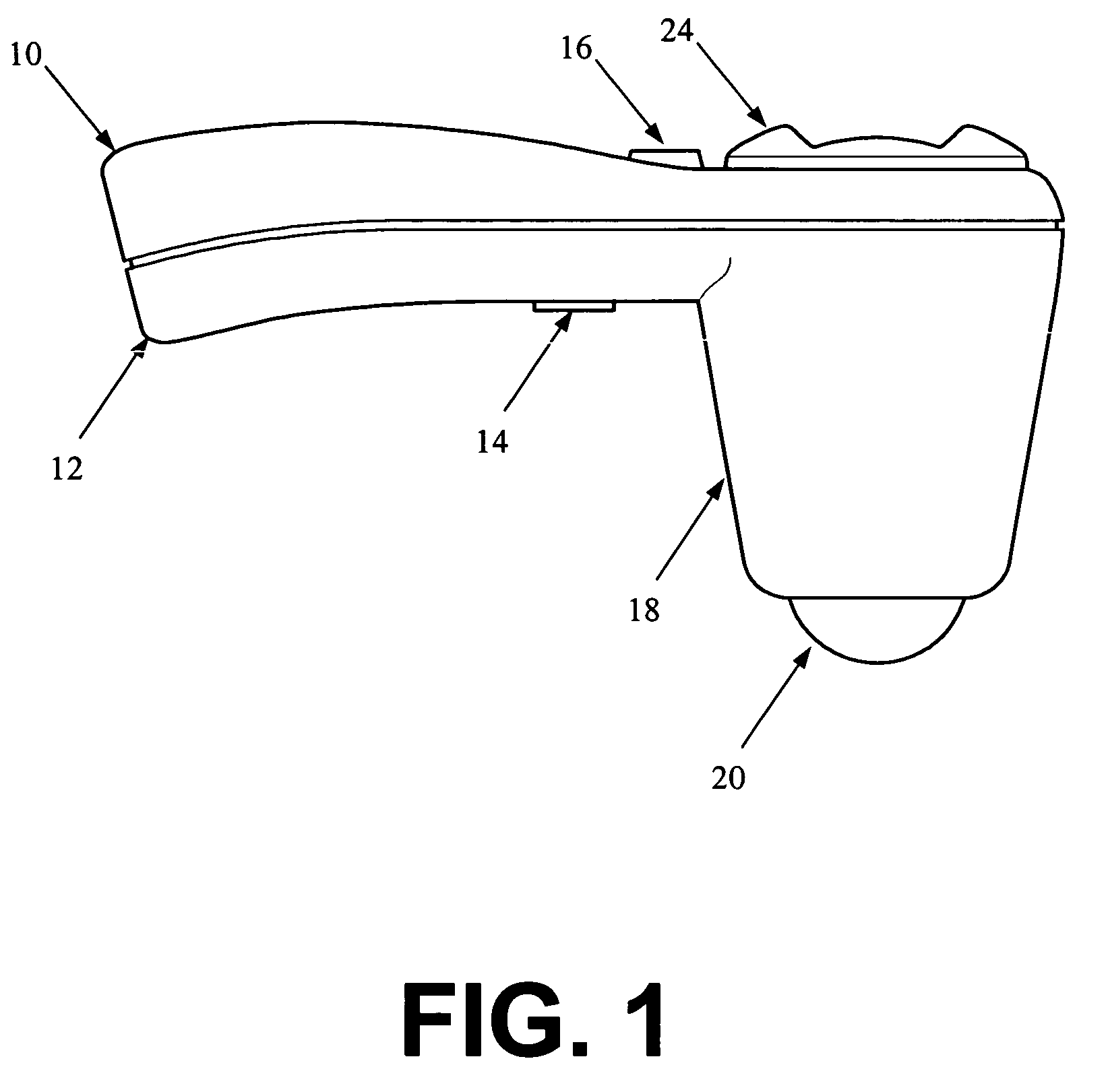3D ultrasound-based instrument for non-invasive measurement of amniotic fluid volume
a 3d ultrasound and amniotic fluid technology, applied in the field of obstetrics, can solve the problems of poor correlation between the afi and the true af volume, invasive and cumbersome methods, and not being routinely used, and achieve the effect of robust positioning
- Summary
- Abstract
- Description
- Claims
- Application Information
AI Technical Summary
Benefits of technology
Problems solved by technology
Method used
Image
Examples
Embodiment Construction
[0065]The preferred portable embodiment of the ultrasound transceiver of the amniotic fluid volume measuring system are shown in FIGS. 1–4. The transceiver 10 includes a handle 12 having a trigger 14 and a top button 16, a transceiver housing 18 attached to the handle 12, and a transceiver dome 20. A display 24 for user interaction is attached to the transceiver housing 18 at an end opposite the transceiver dome 20. Housed within the transceiver 10 is a single element transducer (not shown) that converts ultrasound waves to electrical signals. The transceiver 10 is held in position against the body of a patient by a user for image acquisition and signal processing. In operation, the transceiver 10 transmits a radio frequency ultrasound signal at substantially 3.7 MHz to the body and then receives a returning echo signal. To accommodate different patients having a variable range of obesity, the transceiver 10 can be adjusted to transmit a range of probing ultrasound energy from appro...
PUM
 Login to View More
Login to View More Abstract
Description
Claims
Application Information
 Login to View More
Login to View More - R&D
- Intellectual Property
- Life Sciences
- Materials
- Tech Scout
- Unparalleled Data Quality
- Higher Quality Content
- 60% Fewer Hallucinations
Browse by: Latest US Patents, China's latest patents, Technical Efficacy Thesaurus, Application Domain, Technology Topic, Popular Technical Reports.
© 2025 PatSnap. All rights reserved.Legal|Privacy policy|Modern Slavery Act Transparency Statement|Sitemap|About US| Contact US: help@patsnap.com



